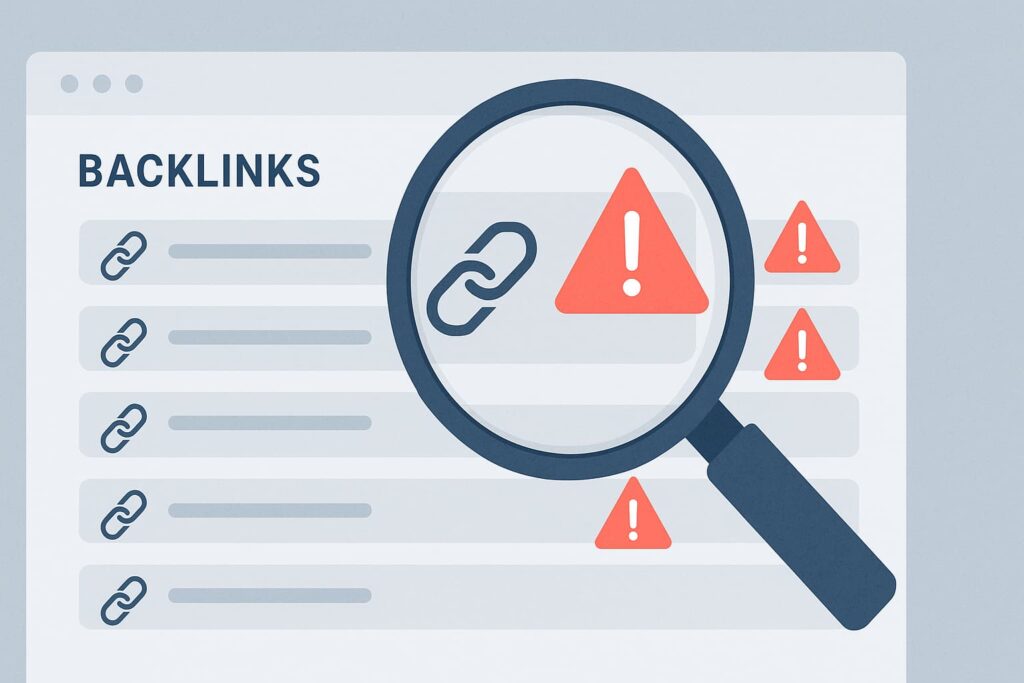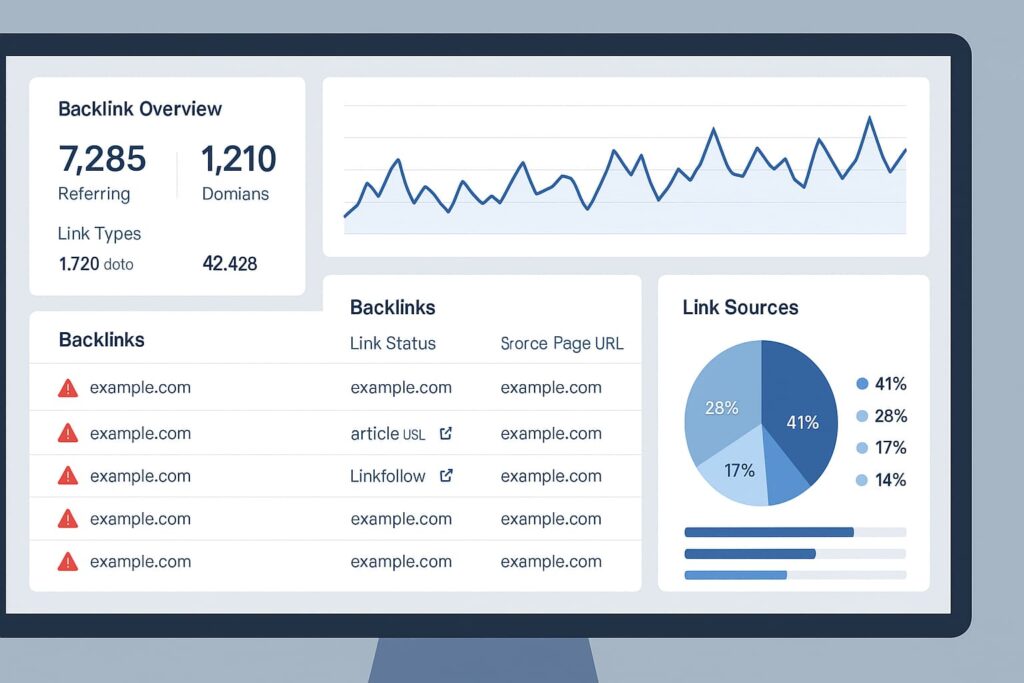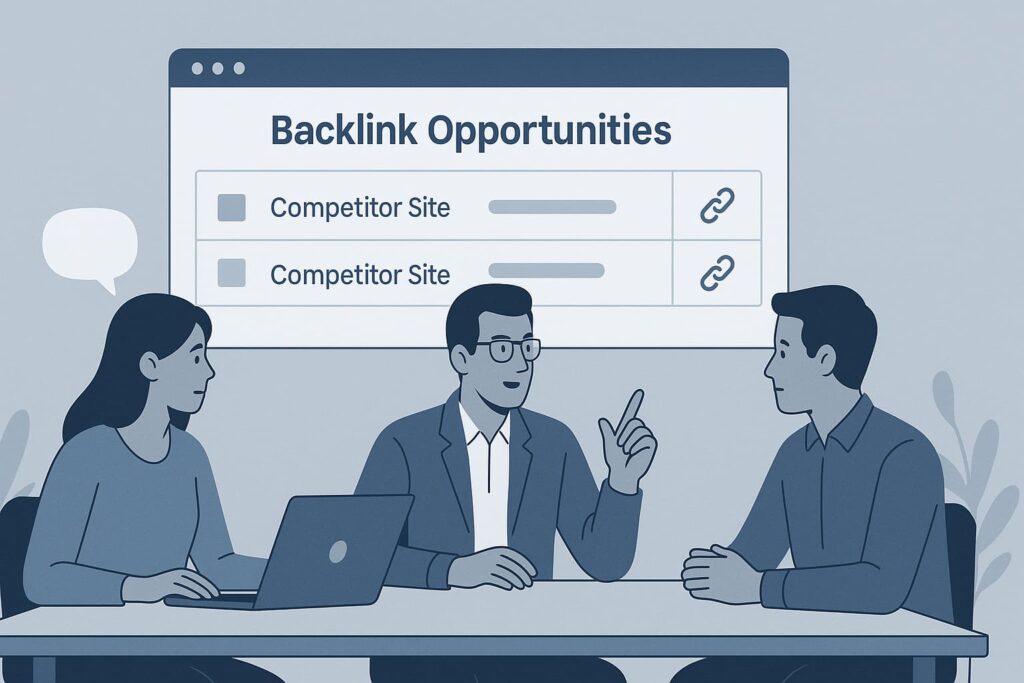A link-building audit is a detailed examination of your website’s backlink profile to identify harmful, low-quality, or spammy links that could be hurting your search rankings. If you’ve noticed a sudden drop in traffic or received a manual penalty from Google, a professional audit can help pinpoint the issue and provide solutions.
1. Initial Backlink Profile Analysis
The first step in any link-building audit is a full scan of your backlink profile. The service will use tools such as Ahrefs, Majestic, or SEMrush to gather all the links pointing to your site. This includes:
- Total number of backlinks — How many links exist in your profile.
- Referring domains — The number of unique websites linking to you.
- Link types — Whether the links are dofollow, nofollow, or sponsored.
- Link sources — Where the links are coming from (blogs, forums, directories, etc.).
This data helps establish a baseline for further analysis.
2. Identifying Toxic and Low-Quality Links

A proper link audit thoroughly examines each backlink to identify ones that may be hurting search performance. It focuses on:
- Shady linking neighborhoods — Flags links from untrustworthy sources such as link farms, adult sites, or gambling pages that search engines often distrust.
- Forced-looking anchor text — Like when “best plumber in Chicago” shows up way too often in your links, making it obvious someone’s trying to game the system
- Black-hat link schemes — Including paid links or fake blog networks that violate Google’s rules
The payoff? You’ll get a clear hit list of toxic links to remove or disavow, protecting your hard-earned search rankings. No more guessing — just straightforward actions to clean up your backlink profile.
3. Anchor Text Distribution Review
A natural backlink profile contains varied anchor text types, including brand names, generic phrases like “click here,” and partial-match keywords such as “SEO audit services.” The audit analyzes this distribution because an excessive number of exact-match keyword anchors often signals unnatural link building.
Search engines may interpret this pattern as manipulation and apply ranking penalties. The review identifies these imbalances so they can be corrected to maintain a healthy, organic-looking link profile.
4. Competitor Backlink Comparison
A complete link audit doesn’t just examine your backlinks—it digs into your competitors’ link profiles to reveal valuable connections you’re missing. By comparing their backlinks to yours, you can instantly see which reputable websites are linking to them but not to you. These gaps represent easy wins—securing similar high-quality backlinks could significantly boost your search rankings.
The real power comes when the audit identifies authoritative sites already linking to content similar to yours. This gives you a targeted list of ideal prospects for outreach. Rather than guessing where to build links, you’ll have a strategic, data-backed plan to acquire the exact links that will help you outperform competitors in search results.
5. Toxic Link Removal Process
When dangerous or spammy backlinks are identified through the audit, a systematic removal process begins:
- Direct Removal Requests — Website owners are contacted to request takedowns of harmful links
- Google Disavow as Backup — If removal isn’t possible, links are officially disavowed through Google’s system
- Continuous Verification — Regular monitoring confirms whether links have been successfully removed or disavowed
This step is especially crucial if you’ve received a manual penalty from Google. Ignoring toxic links can lead to:
- Long-term ranking declines
- Potential deindexing (in extreme cases)
A thorough cleanup ensures your backlink profile stays clean, penalty-free, and optimized for long-term growth.
6. Actionable Recommendations for Future Link Building
A comprehensive link audit does more than just clean up bad links—it gives you a customized blueprint for building authoritative backlinks that grow your site’s credibility. You’ll get specific strategies designed for your industry and SEO objectives, not vague suggestions that could apply to anyone.
Key strategies typically include:
- Guest posting — Find niche sites open to contributions and tips to boost outreach success.
- Broken link building — Spot dead links where your content can be a useful replacement.
- PR opportunities — Suggest story angles to earn backlinks from media and editorial sources.
- Content gap analysis — Uncover link-worthy topics your competitors cover but you don’t.
- Partnerships — Highlight potential link-building collaborations with relevant brands or influencers.
The goal is to build links through real value—relevant content and authentic outreach. Some services also provide outreach templates or introductions to publishers to help you take action faster.
7. Final Report and Follow-Up
The audit delivers a clear, actionable report including:
- A complete list of removed/disavowed links;
- Key improvements in your backlink profile;
- Prioritized next steps for sustainable link building.
Top-tier services go beyond raw data — they include expert consultations to walk you through findings and address your questions. The best audits combine automated scanning with human analysis, delivering precise recommendations tailored to your unique SEO goals. This dual approach provides both immediate fixes and long-term strategies for maintaining a healthy, high-performing link profile.
For example, 3XE Digital offers expert-led link-building audits that go beyond automated scans. They provide direct consultations to explain findings, assess link quality, analyze anchor text, and compare competitor profiles. Their team handles toxic link removal through outreach and disavow files. Clients receive clear, tailored recommendations aligned with their SEO goals.
How a Link Building Audit Helps Your SEO

Think of a link audit as a full health check-up for your website’s backlink profile. It doesn’t just protect your SEO — it uncovers valuable opportunities for improvement. Here’s what a professional audit can do for you:
Ranking Recovery and Restoration
Ever noticed your rankings slipping without explanation? The culprit is often hidden in your backlinks. Over time, toxic links can pile up from:
- Spammy directory listings,
- Low-quality guest posts,
- Even deliberate attacks from competitors.
A thorough audit acts like a detective, pinpointing every harmful link. Once these problematic connections are removed or disavowed, search engines can properly assess a site’s true authority. The results speak for themselves — many websites regain 3-5 positions for competitive keywords within just 2-3 months of cleaning up their link profile.
Proactive Penalty Prevention
Google’s algorithms constantly evolve to detect and punish artificial link schemes. An audit acts as an ongoing monitoring system that:
- Flags risky links before they trigger algorithmic filters;
- Identifies patterns that might attract manual reviews;
- Creates documentation proving your compliance efforts.
This preventative approach is significantly more cost-effective than recovering from an actual penalty, which can take 6-12 months to resolve fully.
Strategic Link-Building Intelligence
A solid link audit isn’t just about fixing bad links—it helps you find real opportunities to grow. It does this by:
- Reviewing competitor backlinks to spot high-authority sites you can target.
- Showing which types of content in your niche attract the most links.
- Highlighting potential partnerships with trusted industry sources.
Instead of guessing where to get links, you’ll have a clear plan based on data—making your outreach more focused and effective.
For businesses facing sudden traffic drops of 15% or more, or those planning major website migrations or redesigns, a professional audit is crucial for risk management. The cost often justifies itself through regained traffic and more effective link-building. Advanced audits may also include ongoing monitoring with quarterly reviews to catch new issues before they escalate.
The most valuable audits combine both technical remediation with strategic consulting — not just identifying bad links, but teaching teams how to build sustainable, high-value connections that compound in value over time. This dual approach makes it an indispensable tool for any serious SEO strategy.
Avoiding Future Mistakes with Pro Guidance

A professional link audit extends beyond immediate fixes—it delivers critical insights to prevent recurring issues. By analyzing what damaged a backlink profile, businesses gain the knowledge to cultivate and sustain high-quality links going forward.
Premium audit services typically provide:
- Explain link issues — Show why certain backlinks were harmful and how to avoid similar ones.
- Offer tailored advice — Provide industry-specific link-building best practices.
- Track links over time — Run regular checks to catch new toxic links early.
This forward-looking approach protects rankings, reduces cleanup work, and helps build a long-term strategy that supports consistent SEO growth.
Conclusion
Using a link-building audit service helps you understand the state of your backlinks, eliminate harmful ones, and plan for future improvements. The process includes checking, analyzing, cleaning up, and improving your link profile to support stronger rankings and increased organic traffic.
To get the most value, choose a service that provides thorough analysis, manual link cleanup, and practical next steps—instead of depending only on automation. This approach delivers reliable insights for long-term SEO results.